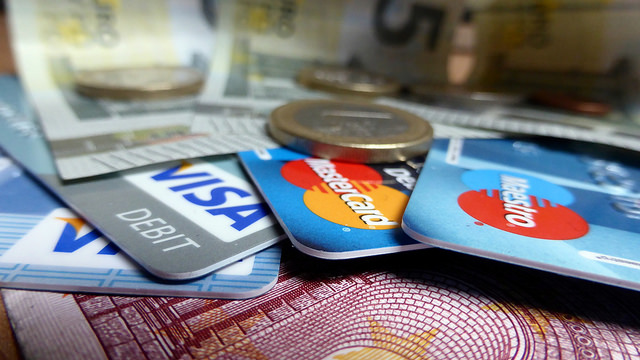Internet-related deception has been stealing billions of dollars from online stores for years. Upon being founded to track cybercrime, the Internet Crime Complaint Centre receives nearly 800 complaints from US consumers every day. The complaints range from identity theft and failed delivery of items or payments, to bank card chargebacks. The number of complaints is not precise because people don’t report about 85% of problems they face on the Internet.

E-commerce merchants are most susceptible to becoming victims of cybercrime. For the past few years, several large-scale security attacks have disclosed the vulnerability of all kinds of organizations and businesses. Modern technologies have progressed to assist with the protection against fraud, with both merchants and consumers doing everything possible to fight fraud. Despite this fact, e-commerce is still generating favorable circumstances for online thieves in the spheres that encompass charge card fraud, identity theft, personal and business e-mail scams, phishing scams, as well as personal data breaches.
Any merchant exposed can become a victim of cyber-related crime. All online retailers have to ensure a safe and secure shopping environment for their buyers, while protecting both their customers and themselves from probable financial losses. They have to be responsible for protecting not only their data but their customers’ as well.
What is a chargeback?
Fraud mostly comes in the form of a chargeback. A chargeback is the result of a plastic card charge denied by its holder. In most cases, it happens when the debit card was stolen or used through deception. The clients using online forms of payments such as credit cards might also request for the charges to be removed when they consider that they have been defrauded by the seller. The buyers are allowed to dispute purchases according to the Fair Credit Billing Act. They can do it in two cases:
- The credit card is stolen or used without the legal cardholder’s permission.
- The purchaser is sure that you did not perform your obligation in delivering the item.
You either didn’t send it or sent another product. If you mistakenly delivered an incorrect product, it doesn’t represent a true case of fraud, but it results in chargebacks. It is considered a scam if you transported the correct product but the customer claims that you did not. Intentionally fraudulent acts reflect the biggest portion of e-commerce chargebacks.
If you approve credit cards through PayPal, chargeback may also emerge from the buyers. When a client initiates a chargeback with his bank card, PayPal deducts the amount of transaction from the merchant’s account if he doesn’t follow PayPal’s Seller Protection Policy. All sellers who adopt credit card payments are subjected to this risk and are liable to chargebacks.
When the buyer disputes a negotiation with his credit card company for an unauthorized charge or undelivered good, they have to show the evidence that the customer collected the item. Unfortunately, you still might receive a chargeback. It happens due to non-receipt of the product, it is delivered not as described, or the transaction is reported as illegal.

Another problem is that the policy applies only to the sale of physical goods, and not to every service. What do you do if your company provides Australian assignment help, for example, and you receive an order from a client that says “please, write my essay for me”? The answer is to provide your customer with a physical item. Transport a CD-ROM containing your work.
Chargebacks repeatedly occur as it is difficult and expensive to prove that the customer is wrong. However, there is no need to despair. Being familiar with online trickery is the best method to fight it. You can use some basic security strategies for your website to minimize the risk of excessive chargebacks or even avoid them altogether.
- It is necessary to verify the cardholder’s address. Credit card merchants offer an address verification service (AVS) that enables it to compare the billing address a buyer indicates with the cardholder’s name. If the billing address and name don’t match the data associated with the account, you are informed right away. Additionally, you are capable of making this comparison manually if AVS protection isn’t added to your online merchant account.
- You are required to get the card verification value. When you have an order from a client, don’t forget to ask for his card verification value (CVV2). This sequence of numbers is displayed only on the consumer’s credit card. The customer needs to have physical access to his credit card to see the numbers. The sequence of numbers is represented as three digits on the back of a Visa, MasterCard, or Discover card or as four digits on the front of an American Express card.
- It is crucial to deal only with approved transactions. If a credit card is declined for any reason, don’t process it. Although this tip appears to be clear, you may be tempted to ignore the message and try to proceed with the order anyway.
- It is a good idea to work with 3D secure. The 3D verification process applies numerous sources to provide identification of the validity of the payment method for online transactions. Online retailers did not want to use this approach at first because it demands from their consumer to leave the web store for a little while and affirm the payment on a third-party site. This interruption to the purchase process is believed to contribute to shopping cart abandonment. Nevertheless, significant improvements have been implemented to the verification process, making it less burdensome to the purchaser when checking out.

- Always be cautious of excessive orders. Customers using stolen or compromised credit cards usually buy extremely large orders or pick up several products of the same item. Call the number on the billing address to confirm unusual orders.
- You should carefully study e-mail addresses. Always request for a customer’s e-mail address at the time of investment. As soon as an e-mail address looks suspicious, call the buyer and verify his order.
- It is important to keep good records. Maintain copies of online order transactions, verification e-mails, and records of any other communication you have with your clients.
- It is essential to notify your return policy in details. Preventing or fighting chargebacks is more difficult if you are not clear about your shipping and return policies. Presenting this information to your consumers makes it tough for buyers to use the lack of data or formal policy as a reason to decline payment to you.
- Always keep your end of the bargain. If there is a delay in shipping the item or the product is out of stock temporarily, inform your purchaser immediately and do not make any charges until the good is shipped.
- Stick to the merchant-issued policies. Whether you employ PayPal or a credit card vendor to process customer transactions, be familiar with its chargeback policy. PayPal chargeback policies were updated in 2016 to give enhanced protection to the retailer. But these new policies also limit the protection for some types of charges. For instance, charges to crowdfunding sites are excluded because of increased risk. When you work with those forms of transactions, you are excluded from protection. Be certain that you stick to your vendor’s recommendations for the prevention and dispute of any chargebacks.
It is possible to dispute any chargebacks by contacting your credit card vendor directly and issuing a fraud alert. Before contacting, get ready to present how you complied with verifying the card’s authenticity at the moment of a deal. Sometimes online retailers might have to wait several months for a claim to be resolved.
Find a Home-Based Business to Start-Up >>> Hundreds of Business Listings.
















































